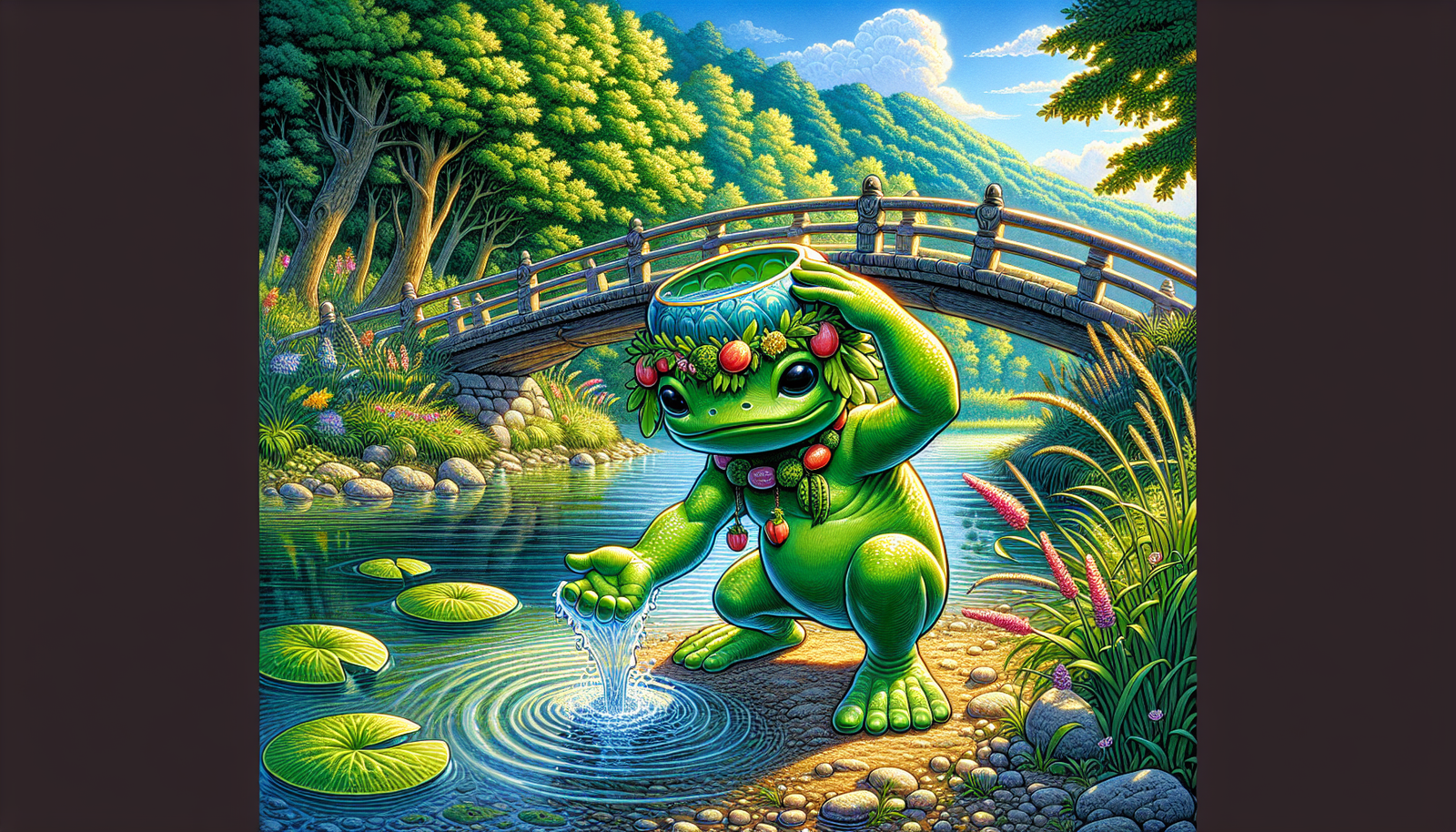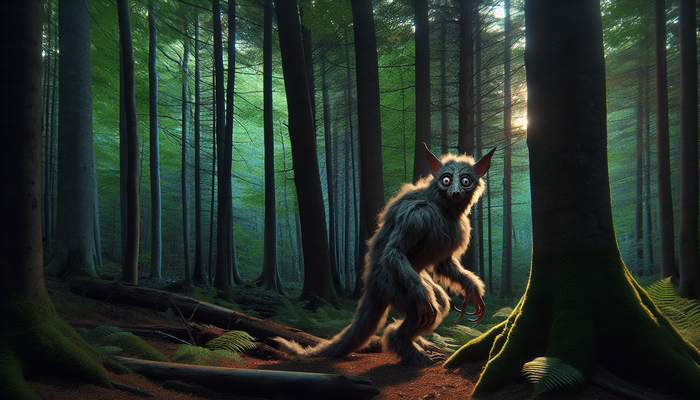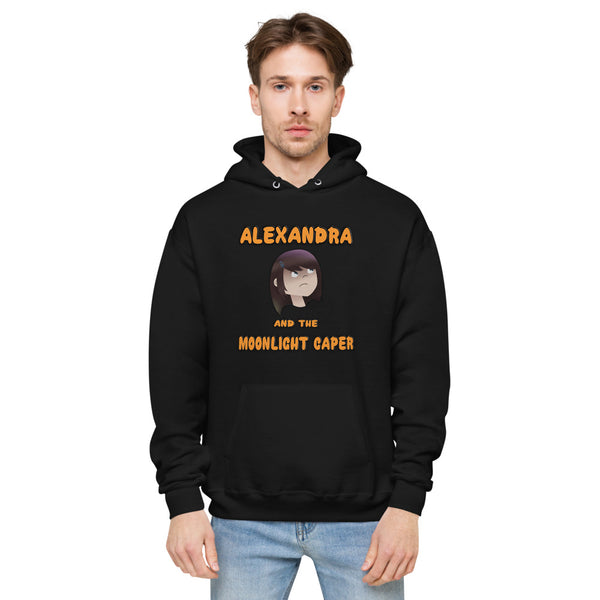Yokai: Spirits and Monsters of Japan

By Oliver Bennett, Cryptozoologist
The world of yokai - those enigmatic spirits and monsters that have captivated the Japanese imagination for centuries - is a realm where the ordinary and the extraordinary collide, where the natural and supernatural dance in an intricate ballet of belief and storytelling.
"In the twilight hour, when the veil between worlds grows thin, the yokai emerge from the shadows," an old Japanese proverb whispers, and I find myself transported to a land where every rustle in the bushes could be a mischievous kappa, and every unexpected gust of wind might herald the arrival of a tengu. This is the allure of yokai - they exist in that tantalizing space between reality and fantasy, challenging our perceptions and igniting our imaginations.
The term "yokai" itself is a fascinating linguistic puzzle, composed of two kanji characters: 妖 (yō), meaning "bewitching" or "attractive," and 怪 (kai), signifying "mystery" or "wonder." This duality perfectly encapsulates the nature of these beings - at once alluring and enigmatic, drawing us in even as they elude our full understanding. Yokai encompass a vast array of supernatural entities, from spirits and monsters to shapeshifters and phenomena that defy easy categorization.
As a researcher and writer deeply immersed in the study of folklore and the unexplained, I've found that yokai are far more than mere figments of imagination or relics of a superstitious past. They are, in many ways, the very essence of Japanese cultural identity, serving as mirrors that reflect the fears, hopes, and values of the society that created them. Through yokai, we can trace the evolution of Japanese thought, from ancient animistic beliefs to modern pop culture phenomena.
In this exploration of the world of yokai, we will embark on a journey through time and space, delving into the historical origins of these fascinating creatures, examining their diverse types and characteristics, and unraveling their profound cultural significance. We'll witness how yokai have adapted to the modern world, shape-shifting much like the kitsune of legend, to remain relevant and captivating in an age of science and technology.
But this is not merely an academic exercise. As we peel back the layers of myth and legend, we'll discover that yokai have much to teach us about the human condition, about our relationship with the natural world, and about the power of storytelling to shape our understanding of reality. Whether you're a seasoned folklorist or a curious newcomer to the world of Japanese mythology, I invite you to join me on this odyssey into the heart of yokai lore.
So, let us light a candle, dim the lights, and prepare ourselves for a journey into the shadows. For in the realm of yokai, every tale holds a kernel of truth, every legend a lesson, and every monster a mirror to our own hidden selves. Welcome to the enigmatic world of Japanese folklore, where the spirits and monsters of Japan await to both terrify and enlighten us.
Historical Origins of Yokai
In those primordial days, every rustling leaf, every babbling brook, every gust of wind was imbued with spirit and intention. The ancient Japanese didn't see the world as we do today, with clear delineations between the animate and inanimate. Instead, they perceived a universe alive with consciousness, where every element of nature possessed its own spirit, or kami. This animistic worldview, known as Shinto, formed the fertile ground from which yokai would eventually sprout.
As I've pored over ancient texts and folklore, I've come to understand that yokai emerged as personifications of these natural phenomena. They were the faces given to the inexplicable, the voices assigned to the mysterious whispers of the forest. A sudden gust of wind wasn't just air in motion; it might be the passing of a tengu, those bird-like mountain spirits. A whirlpool in a river wasn't merely a quirk of hydrodynamics; it could be the work of a kappa, the water-dwelling tricksters of legend.
But yokai were more than just explanations for natural occurrences. They also embodied the fears, anxieties, and moral concerns of early Japanese society. The oni, those fearsome ogre-like creatures, weren't just monsters lurking in the mountains; they were manifestations of the chaos and violence that threatened the ordered world of human society. The kitsune, or fox spirits, with their powers of shapeshifting and illusion, reflected the Japanese fascination with and wariness of deception and transformation.
As Japan's history unfolded, so too did the nature and perception of yokai. The introduction of Buddhism in the 6th century CE brought with it new spiritual concepts and mythological beings that would intermingle with the native Shinto beliefs. This syncretic approach to religion allowed for a rich cross-pollination of ideas, further diversifying the yokai pantheon.
The Heian period (794-1185 CE) saw a flourishing of aristocratic culture and literature, which in turn influenced the portrayal of yokai. It was during this time that many of the classic yokai tales were first recorded in works like the "Konjaku Monogatari" (Tales of Times Now Past). These stories often featured refined and elegant yokai, reflecting the aesthetic sensibilities of the Heian court.
But it was the Edo period (1603-1867) that truly marked the golden age of yokai in Japanese culture. This era of peace and prosperity saw a boom in literacy and popular entertainment, and yokai rode the wave of this cultural renaissance. Artists and writers began to catalog and illustrate yokai with unprecedented detail and creativity.
One figure who stands out in this period is Toriyama Sekien, an 18th-century artist whose work I've studied extensively. Sekien's illustrated catalogs of yokai, such as the "Gazu Hyakki Yagyō" (The Illustrated Night Parade of a Hundred Demons), were groundbreaking. Not only did he document existing yokai folklore, but he also created new yokai, blending traditional elements with his own imagination. Sekien's work exemplifies the fluid nature of yokai lore - these weren't static myths set in stone, but living, evolving entities that grew and changed with the culture that created them.
The Edo period also saw the rise of kaidan, or ghost stories, as a popular form of entertainment. The practice of Hyakumonogatari Kaidankai, or telling one hundred ghost stories in a single night, became a fashionable pastime. This tradition not only preserved existing yokai lore but also contributed to the creation of new yokai to satisfy the public's appetite for the supernatural.
As Japan entered the Meiji period (1868-1912) and began to rapidly modernize, the role of yokai in society underwent another transformation. Scholars like Inoue Enryō sought to rationalize yokai beliefs, viewing them through the lens of modern science and psychology. Enryō's work, while aimed at dispelling superstition, paradoxically helped to preserve yokai lore by documenting and analyzing these beliefs in detail.
This historical journey of yokai from ancient animistic spirits to subjects of scholarly study reflects the evolving relationship between Japanese society and the supernatural. Yet, despite centuries of change, the essence of yokai - their ability to embody the mysterious and the unexplained - has remained constant.
As we move forward in our exploration, we'll see how this rich historical tapestry has shaped the diverse world of yokai we know today. From the mischievous to the malevolent, from the helpful to the horrifying, the yokai that have emerged from this long history are as varied and complex as the culture that gave birth to them. Each type of yokai carries within it echoes of the past, whispers of ancient beliefs, and reflections of the ever-changing face of Japanese society.
Types of Yokai
In my years of research, I've encountered yokai that range from the terrifying to the comical, from the majestic to the mundane. Some appear as fearsome monsters, others as ordinary objects imbued with supernatural life. Some are malevolent tricksters, while others are benevolent guardians. This variety makes categorizing yokai a challenging task, but it's a challenge that offers profound insights into the Japanese worldview.
Broadly speaking, yokai can be classified based on their appearance, behavior, or the natural elements they're associated with. Some scholars have attempted more detailed classifications, such as dividing yokai into categories like human-like, animal-like, plant-like, object-like, or natural phenomenon-like. However, as with many aspects of folklore, these categories often blur and overlap.
Let's explore some of the most notable types of yokai, each with its own fascinating lore and cultural significance:
1. Kappa (河童) - The Water Imps
Among the most famous of all yokai, the kappa holds a special place in Japanese folklore. These water-dwelling creatures are typically depicted as child-sized, with scaly, reptilian skin, webbed hands and feet, and a turtle-like shell on their backs. But their most distinctive feature is the bowl-shaped depression on top of their heads, filled with water that is the source of their power.
Kappa are known for their mischievous, and sometimes malevolent, behavior. They're said to lurk in rivers and ponds, waiting to lure unsuspecting victims into the water. Some tales speak of kappa dragging people and animals into the depths to drown them, while others describe them as tricksters who simply enjoy playing pranks on humans.
Yet, for all their fearsome reputation, kappa also have a comical side. They're known for their love of cucumbers, and many a tale tells of humans outsmarting kappa by offering them this favorite treat. In some stories, if a human bows to a kappa, the polite creature will bow back, spilling the water from its head and rendering it powerless.
The kappa serves as an excellent example of the dual nature of many yokai. While they can be dangerous, they're not purely evil. In fact, some legends speak of kappa sharing valuable knowledge with humans, such as the art of bone-setting. This duality reflects the complex relationship between humans and nature in Japanese culture - respect and fear intertwined.
2. Tengu (天狗) - The Celestial Dogs
The tengu are among the most complex and intriguing of all yokai. Their name literally means "celestial dog," but their appearance is far from canine. Tengu are typically depicted as bird-like creatures with human characteristics, often sporting wings, a long nose (or beak in earlier depictions), and bright red skin.
The evolution of tengu in Japanese folklore is fascinating. In early tales, they were portrayed as dangerous demons, enemies of Buddhism who delighted in causing chaos and leading priests astray. However, over time, their image softened. By the Edo period, tengu had become revered as guardian spirits of the mountains and forests, known for their martial prowess and wisdom.
Tengu are often associated with the practice of shugendō, a syncretic religion that combines elements of Buddhism, Shinto, and Taoism. In many tales, tengu act as teachers, imparting secret knowledge and martial arts techniques to worthy humans. The famous warrior Minamoto no Yoshitsune is said to have learned swordsmanship from the tengu king Sōjōbō.
The transformation of tengu from malevolent spirits to respected guardians reflects broader changes in Japanese society and its relationship with nature. As Japan became more settled and urbanized, the wild mountains once feared as the domain of demons came to be seen as a source of spiritual power and enlightenment.
3. Kitsune (狐) - The Fox Spirits
Perhaps no yokai embodies the complexity and allure of Japanese folklore better than the kitsune, or fox spirits. Kitsune occupy a unique position in the yokai pantheon, straddling the line between the natural and supernatural worlds.
In Japanese folklore, foxes are believed to possess supernatural abilities that increase as they age. A fox that lives to be 100 years old gains the ability to shapeshift into human form, typically appearing as a beautiful woman. With each century that passes, the kitsune grows more tails, up to a maximum of nine, becoming more powerful and wise with each additional tail.
Kitsune are known for their intelligence and magical abilities, particularly their skill in creating illusions. They're often portrayed as tricksters, using their powers to deceive humans for their own amusement or gain. However, kitsune are not inherently malevolent. Many tales speak of kitsune forming close bonds with humans, acting as loyal guardians or even lovers.
The most powerful and revered kitsune are the celestial foxes associated with Inari, the Shinto deity of rice, prosperity, and fertility. These white-furred foxes serve as Inari's messengers and are considered benevolent spirits that bring good fortune.
The multifaceted nature of kitsune - at once wild and divine, tricksters and guardians - reflects the complex relationship between humans and nature in Japanese culture. They remind us that the natural world is not something to be conquered or feared, but a realm of mystery and potential both dangerous and beneficial.
4. Oni (鬼) - The Demons
When most people think of Japanese monsters, the image that often comes to mind is that of the oni - fearsome ogre-like creatures with horns, sharp claws, and often depicted with red, blue, or green skin. Oni are among the most recognizable and feared yokai in Japanese folklore.
Traditionally, oni were viewed as harbingers of disaster, bringers of disease, and punishers of evildoers. In Buddhist cosmology, they serve as torturers in the various hells. Their very name, written with the kanji 鬼, can be translated as "demon" or "ogre," but also carries connotations of hiding or invisibility, suggesting their nature as unseen forces of chaos and destruction.
Yet, as with many yokai, the nature of oni is not entirely straightforward. While they are often antagonists in folklore, there are also tales of oni who act as protectors or guardians. The famous story of Shuten-dōji, a powerful oni defeated by the warrior Minamoto no Raikō, portrays the oni as a complex figure - a fearsome threat, but also a tragic character with his own motivations and backstory.
In modern times, the image of the oni has been somewhat rehabilitated. They're often depicted in a more comical light, and during the Bean-Throwing Festival (Setsubun), people playfully chase away oni as a way of driving out bad luck for the coming year. This evolution reflects changing attitudes towards the supernatural in Japanese society, as well as the enduring adaptability of yokai lore.
5. Yūrei (幽霊) - The Ghosts
While not always classified as yokai in the strictest sense, yūrei, or ghosts, play a significant role in Japanese supernatural lore and are often grouped with yokai in popular culture. Unlike many Western ghosts, yūrei have a distinct appearance and set of characteristics that make them a unique category of supernatural being.
Yūrei are typically depicted as pale, translucent figures dressed in white burial kimono. They often have long, disheveled black hair and lack legs, instead floating above the ground. This iconic image has its roots in Kabuki theater traditions and has been popularized in modern horror films and anime.
The most common type of yūrei are onryō, vengeful spirits who have returned to the world of the living to seek revenge for wrongs done to them in life. Famous examples include Oiwa from the story "Yotsuya Kaidan" and Okiku from "Banchō Sarayashiki." These tales often serve as cautionary stories about the consequences of betrayal, cruelty, or injustice.
Not all yūrei are malevolent, however. Some are simply spirits unable to pass on due to unfinished business or strong emotional attachments. The ubume, for instance, is the spirit of a woman who died in childbirth and returns to care for her child.
The concept of yūrei reflects Japanese beliefs about the afterlife and the importance of proper funerary rites. It also speaks to cultural ideas about the power of strong emotions - particularly negative ones like rage, jealousy, or sorrow - to transcend even death.
6. Tanuki (狸) - The Raccoon Dogs
The tanuki, or Japanese raccoon dog, occupies a special place in Japanese folklore. While real tanuki are native animals related to foxes and wolves, in yokai lore they are renowned shapeshifters and masters of illusion, second only to kitsune in their magical abilities.
In folklore, tanuki are often portrayed as jolly, mischievous creatures with a penchant for drink and a talent for drumming on their comically large testicles. This last feature, while startling to many non-Japanese, is a symbol of good fortune and financial luck in Japanese culture.
Tanuki are known for their ability to transform into various objects or people, often using these disguises to play tricks on humans. However, their transformations are frequently imperfect or comical, leading to humorous situations rather than the more serious deceptions associated with kitsune.
Despite their reputation for mischief, tanuki are generally seen as benign or even lucky creatures. Many Japanese restaurants and bars have statues of tanuki at their entrances, believed to bring good fortune to the business.
The playful nature of tanuki in folklore reflects a more lighthearted side of yokai lore, reminding us that not all supernatural encounters in Japanese tradition are frightening or dangerous. Tanuki represent the joy of transformation and the humor found in the unexpected.
7. Nekomata (猫又) - The Forked-Tail Cats
Cats have long been associated with the supernatural in cultures around the world, and Japan is no exception. The nekomata is a type of yokai that begins its existence as an ordinary house cat. However, as a cat ages (usually past ten years old), it may develop magical powers, grow an additional tail, and transform into a nekomata.
These feline yokai are known for their ability to stand on their hind legs, speak human languages, and control the dead. Some tales describe nekomata as vengeful spirits, returning to punish former owners who mistreated them. Others portray them as powerful sorcerers, capable of casting curses and creating magical flames.
The legend of the nekomata likely has roots in the natural behavior of cats, particularly their nocturnal nature and seemingly mysterious ways. The forked tail, a key feature of the nekomata, may have been inspired by the kinked or partially-forked tails sometimes seen in Japanese bobtail cats.
The nekomata serves as a reminder of the thin line between the domestic and the wild, the familiar and the supernatural. It suggests that even the most common household pet might harbor secret powers or a hidden nature.
8. Yuki-onna (雪女) - The Snow Woman
One of the most hauntingly beautiful yokai is the Yuki-onna, or Snow Woman. As her name suggests, she is closely associated with winter and snowstorms. Yuki-onna is typically depicted as a tall, beautiful woman with long black hair, pale skin, and lips as red as blood. She appears on snowy nights, sometimes as nothing more than a pale mist, other times as a fully corporeal woman.
The nature of Yuki-onna varies greatly between stories. In some tales, she is a malevolent spirit who preys on travelers, freezing them to death with her icy breath or leading them astray to die in snowdrifts. In others, she is more of a tragic figure, doomed to wander in eternal winter, occasionally forming doomed relationships with human men.
One of the most famous Yuki-onna stories, recorded by Lafcadio Hearn in his book "Kwaidan," tells of a young woodcutter who encounters Yuki-onna on a stormy night. She spares his life on the condition that he never speak of their meeting. Years later, he tells the story to his wife, only to discover that she is Yuki-onna in disguise.
The Yuki-onna embodies the beauty and danger of winter, reflecting the Japanese aesthetic concept of "yūgen" - a deep, mysterious sense of the universe and the sad beauty of human suffering. She represents the harsh realities of life in snow-bound regions of Japan, where winter could be a time of great hardship and danger.
9. Jorōgumo (絡新婦) - The Binding Bride
The Jorōgumo, whose name can be translated as "binding bride" or "whore spider," is a terrifying yokai that combines the fear of spiders with anxieties about female sexuality and deception. In its true form, the Jorōgumo is a giant spider, often described as being as large as a cow, with the ability to shapeshift into a beautiful woman.
According to legend, when a spider lives for 400 years, it gains magical powers and the ability to transform. The Jorōgumo uses its feminine wiles to lure men into its lair, where it binds them in silk threads and devours them. Some stories describe the Jorōgumo as being able to control other, smaller spiders, sending them to do its bidding.
The tale of the Jorōgumo often serves as a cautionary story about the dangers of being seduced by beauty or giving in to lustful desires. It also reflects fears about the hidden dangers that might lurk in the natural world, particularly in dark, secluded places like caves or old houses.
Interestingly, the Jorōgumo is sometimes associated with waterfalls, and there are several famous waterfalls in Japan named after this yokai. This connection might stem from the way spider webs can resemble cascading water when caught in the right light.
10. Nurarihyon (ぬらりひょん) - The Supreme Commander of All Yokai
Nurarihyon is a peculiar and intriguing yokai, often described as the leader or "supreme commander" of all yokai. Unlike many yokai that have clear animal or elemental associations, Nurarihyon's appearance is distinctly human-like, albeit with some strange features.
Typically depicted as an old man with an elongated, gourd-shaped bald head, Nurarihyon is known for his peculiar habit of sneaking into people's homes, making himself comfortable, and acting as if he owns the place. He might help himself to tea and snacks, smoke a pipe, and generally behave as the master of the house while the real owners are too confused or intimidated to object.
The name "Nurarihyon" is often interpreted to mean something slippery or hard to grasp, both literally and figuratively. This reflects the yokai's ability to slip into homes unnoticed and his elusive nature.
Despite his somewhat comical appearance and behavior, Nurarihyon is considered one of the most powerful yokai. His ability to enter homes at will and command respect (or at least non-interference) from humans speaks to a deep power that goes beyond mere physical strength.
The concept of Nurarihyon might be seen as a metaphor for the way the supernatural world can intrude into everyday life, turning familiar settings into something strange and unsettling. It also plays with ideas of social hierarchy and the power of confidence and audacity.
As we conclude this exploration of yokai types, it's important to remember that these categories are far from exhaustive. The world of yokai is vast and varied, with regional variations and lesser-known creatures that could fill volumes. Each yokai, whether major or minor, contributes to the rich tapestry of Japanese folklore.
Moreover, the nature of yokai is fluid and ever-changing. As Japanese society has evolved, so too have the stories and characteristics of these supernatural beings. New yokai continue to be created, inspired by modern fears and anxieties, while ancient yokai find new relevance in contemporary contexts.
Cultural Significance of Yokai
The significance of yokai in Japanese society is multifaceted and profound, touching on aspects of spirituality, morality, and national character.
1. Yokai in Folklore and Oral Tradition
At their core, yokai are creatures of story. They live and breathe in the tales passed down from generation to generation, in the whispered warnings of grandmothers to their grandchildren, in the fireside stories shared on dark nights. These oral traditions have played a crucial role in preserving and propagating yokai lore throughout Japanese history.
Many yokai stories serve as cautionary tales, teaching important moral lessons or practical wisdom. The kappa, for instance, with its penchant for drowning unsuspecting victims, serves as a warning about the dangers of water. Children are taught to be wary of rivers and ponds, with the kappa standing in for the very real risks of drowning. Similarly, tales of the Nure-onna, a snake-like woman who lures people to watery deaths, might be seen as warnings against trusting strangers or venturing out alone at night.
Other yokai stories reflect societal values and norms. The tale of the Zashiki-warashi, a child-like house spirit that brings good fortune to those who treat it well, emphasizes the importance of hospitality and respect for tradition. The various shapeshifting yokai, like kitsune and tanuki, often feature in stories that warn against deception while also acknowledging the complexity of truth and appearance in human interactions.
These stories do more than just entertain or educate; they help to create a shared cultural vocabulary. References to yokai pepper everyday Japanese conversation, from idioms and metaphors to common expressions. For example, someone who is caught in a lie might be accused of having a "fox's trick" (kitsune no tako), referencing the deceptive nature of kitsune.
2. Artistic Representations of Yokai
The visual arts have played a crucial role in shaping our understanding and perception of yokai. From ancient scroll paintings to modern manga and anime, artists have given form to these often formless entities, creating iconic images that have become an integral part of Japanese visual culture.
During the Edo period (1603-1867), there was an explosion of yokai imagery in popular art. Woodblock print artists like Toriyama Sekien, Utagawa Kuniyoshi, and Katsushika Hokusai created vivid depictions of yokai that continue to influence how we imagine these creatures today. Sekien's illustrated catalogs of yokai, in particular, played a crucial role in standardizing the appearance of many yokai and introducing new ones to the popular imagination.
One of the most famous yokai-themed artworks is the "Hyakki Yagyō" or "Night Parade of One Hundred Demons," a theme that has been depicted by numerous artists over the centuries. These scrolls or prints show a riotous procession of yokai parading through the streets at night, embodying the idea of the supernatural world intruding into human spaces.
In modern times, yokai have found new life in manga, anime, and video games. Artists and storytellers continue to draw inspiration from traditional yokai lore while also creating new yokai that reflect contemporary fears and anxieties. The works of Shigeru Mizuki, creator of the popular "GeGeGe no Kitarō" series, have been particularly influential in keeping yokai relevant in modern Japanese popular culture.
3. Yokai in Festivals and Celebrations
Yokai are not confined to stories and artworks; they play an active role in many Japanese festivals and cultural events. These celebrations serve not only to honor yokai traditions but also to strengthen community bonds and pass on cultural knowledge to younger generations.
One of the most famous yokai-related festivals is the Hyakki Yagyō Matsuri, or Night Parade of One Hundred Demons Festival, held annually in Kyoto. Inspired by the artistic theme of the same name, this festival features a parade of people dressed as various yokai, bringing the night parade to life in the streets of the ancient capital.
In the town of Sakaiminato, birthplace of manga artist Shigeru Mizuki, yokai are celebrated year-round. The town's Mizuki Shigeru Road is lined with bronze statues of yokai from Mizuki's works, and an annual yokai festival draws tourists from across Japan.
Many other local festivals throughout Japan incorporate yokai elements, often tied to specific local legends or beliefs. These events not only preserve yokai traditions but also serve as important cultural and economic drivers for their communities.
4. Yokai in Modern Popular Culture
Far from fading away in the face of modernization, yokai have found new life in contemporary Japanese popular culture. They feature prominently in manga, anime, video games, and even modern literature, often reimagined in ways that speak to current societal issues and concerns.
In the world of manga and anime, series like "GeGeGe no Kitarō," "Natsume's Book of Friends," and "Nura: Rise of the Yokai Clan" have introduced yokai to new generations of fans, both in Japan and internationally. These works often blend traditional yokai lore with modern storytelling techniques, creating narratives that are at once familiar and fresh.
Video games have also embraced yokai, with series like "Yokai Watch" becoming global phenomena. These games often gamify the process of encountering and collecting yokai, tapping into the long tradition of yokai catalogs while adding interactive elements that appeal to modern audiences.
Even in literature, yokai continue to inspire. Contemporary authors like Haruki Murakami often incorporate yokai-like elements into their magical realist works, while others, like Hiromi Kawakami in her novel "The Night Watchman," directly engage with yokai traditions to explore modern themes.
5. Yokai as Reflections of Societal Changes
One of the most fascinating aspects of yokai lore is how it has evolved to reflect changing societal conditions and concerns. As Japan has modernized and urbanized, new yokai have emerged that embody contemporary fears and anxieties.
For example, the Kuchisake-onna, or Slit-Mouthed Woman, is a modern yokai that first appeared in urban legends of the 1970s. This yokai, a woman with a surgically enlarged mouth who asks victims if they think she's pretty before attacking them, can be seen as reflecting anxieties about beauty standards and urban violence.
Similarly, technological yokai have emerged, such as the Teke Teke, the ghost of a woman cut in half by a train, which speaks to fears about modern transportation and urban dangers. There are even yokai associated with computers and the internet, reflecting our increasingly digital world.
These modern yokai demonstrate the continued relevance of the yokai tradition in Japanese culture.
From Bigfoot to UFOs: Hangar 1 Publishing Has You Covered!
Explore Untold Stories: Venture into the world of UFOs, cryptids, Bigfoot, and beyond. Every story is a journey into the extraordinary.
Immersive Book Technology: Experience real videos, sights, and sounds within our books. Its not just reading; its an adventure.



























